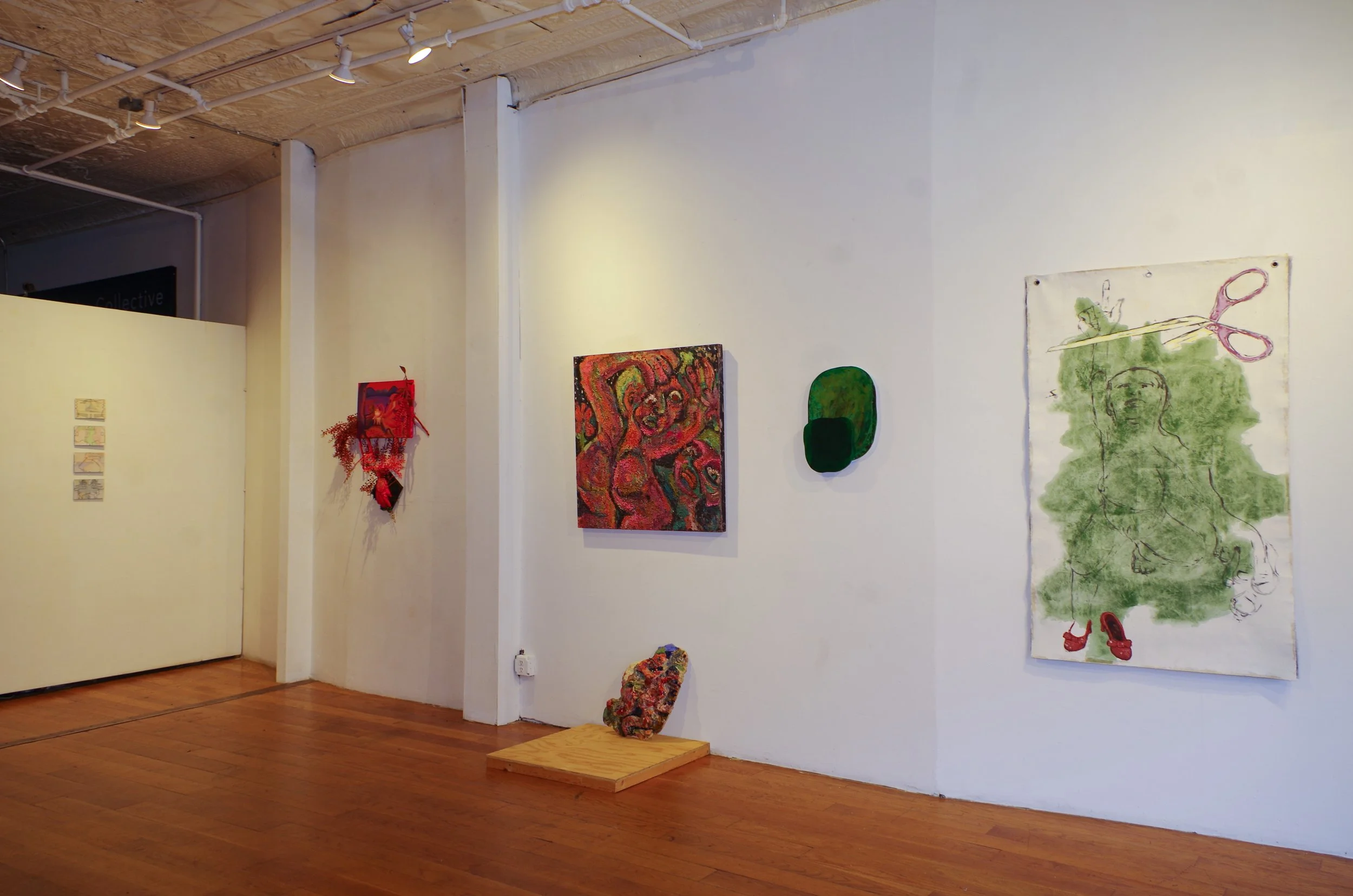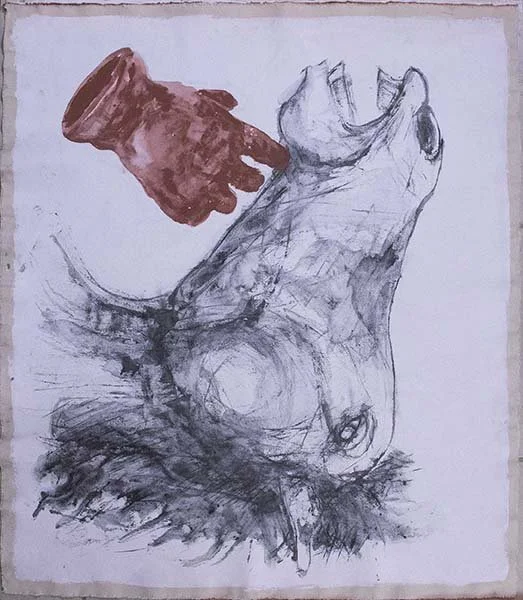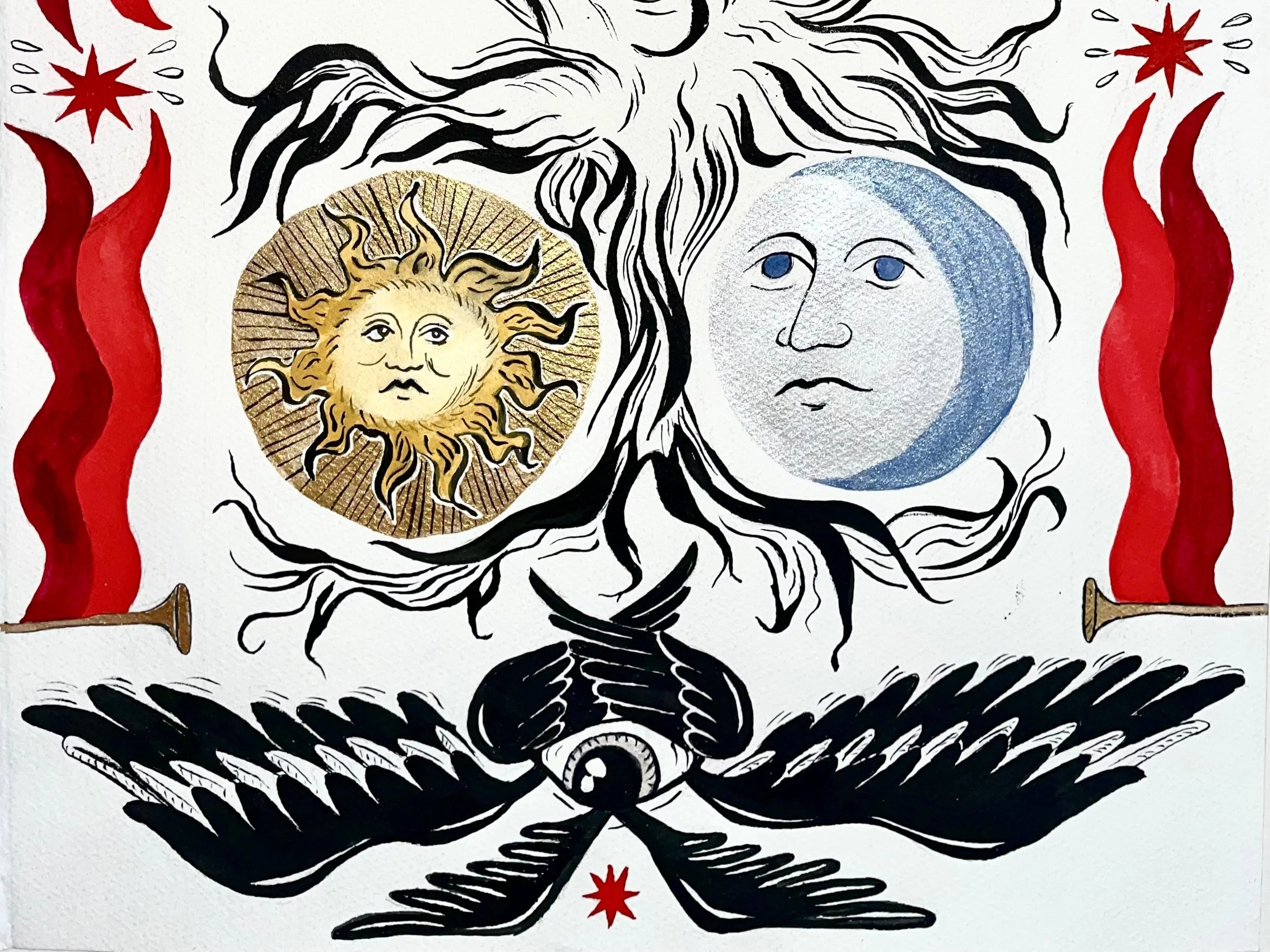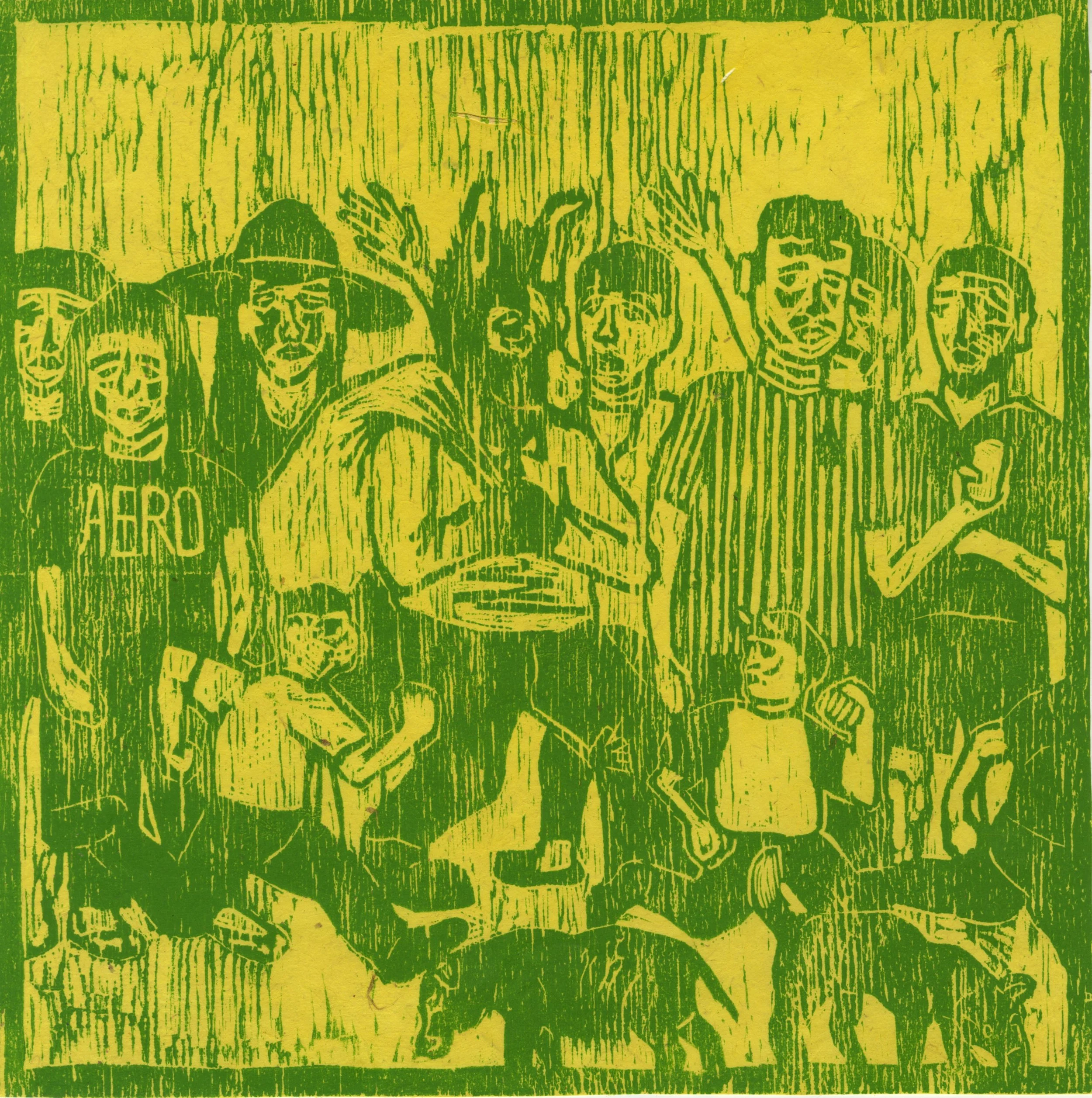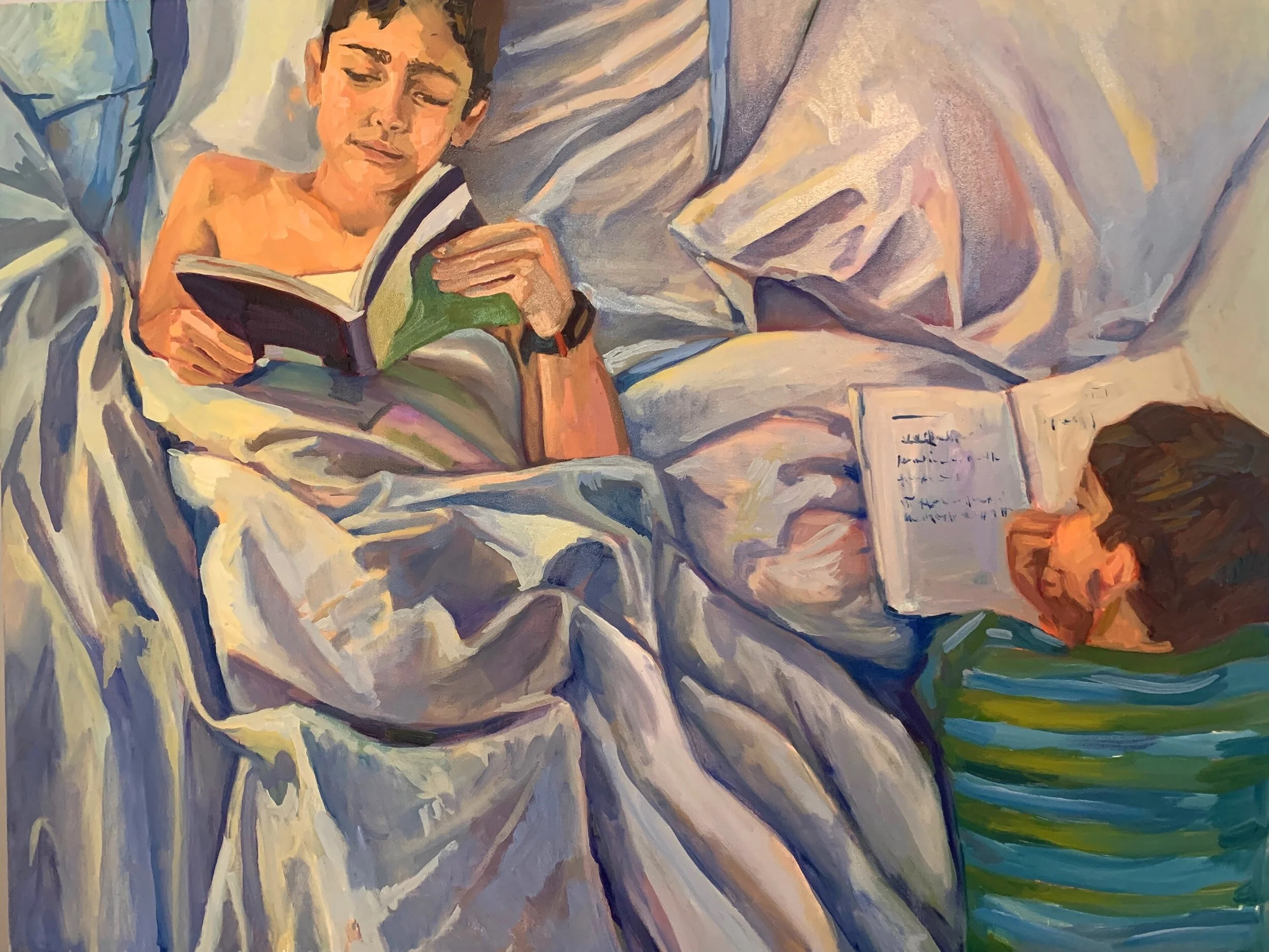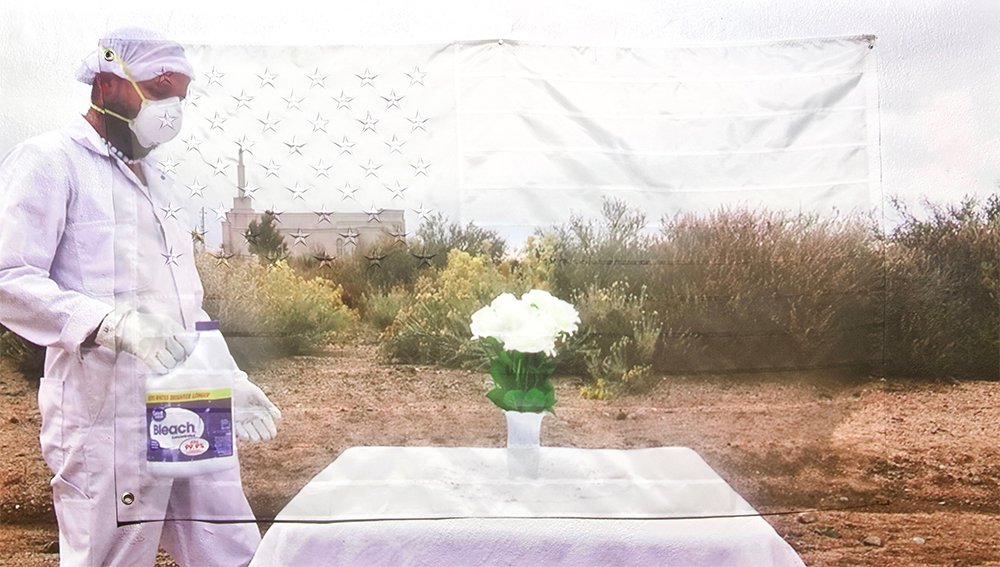Resilient Textures: Chau Nguyen
My work acknowledges oil painting as the point of colonial contact between Vietnam and the French in the 1920s. After the French’s introduction of oil painting to Vietnam, Vietnamese oil painting underwent further changes following the Vietnam War (1955-1975) and the subsequent influx of postwar Western tourism. The use of oil painting in my work questions the role of oil painting in Vietnam as well as what it means to be a contemporary Vietnamese artist. This work accompanies my research into Vietnamese art and cultural archives. My ethnographic approach goes against the grain of the Western art historical canon to embrace these fragments of archives.
Meeting Myself: Jebediah Long
Curiously, it is exactly this offbeat uneasiness that reflects my own humanity. I can feel like a ball of perception trapped in a skin sack, but by materializing that sentiment I get to rejoin the world. My own fallibility is reflected in these paintings, by celebrating their imperfections I begin to touch on just what existence is all about. So these stories of self involved idiosyncratic characters are the stories of me and my journey.
Transparent Boundaries
When a boundary is invisible, it’s easy to bump into. It could trip us. Stop us. Confuse us. It could also reveal something about our environment—and ourselves—that we couldn’t see before. For the twelve participating artists, the group exhibition Transparent Boundaries is about finding, testing, and ultimately transforming the barriers that lay between them and the worlds they envision.
Heavy-handed: Natalie Ortiz
Natalie Jauregui Ortiz is an artist who paints stories of friends and herself as she explores telling stories of underrepresented communities. Reflecting on her experiences as a mixed-generation Mexican-American raised in Northern California and living in NYC, her works investigates themes of intimacy and belonging, isolation and otherness. Her current work focuses on capturing specific moments, oscillating between tight lines with swift movement in glossy, paint-heavy pieces.
Handle With Care: Patrick Bower
I want each of my works to be an action of the mind that vibrates in our bodies. So, I think about power relationships among shapes. I think about movement and tensions. I also think a lot about the varied surfaces of the work as a map of the consciousness, along with the alchemy of color suspended in water.
Half Sinner, All Saint: Isabel Pardo
An exploration of the synchronicities between western alchemical, mystical, and Catholic imagery, Half Sinner, All Saint follows the seven stages of alchemical transformation, the symbolic chemical creation of the philosopher’s stone as a direction to spiritual actualization. In the steps of Calcination, Dissolution, Separation, Conjunction, Fermentation, Distillation, and Coagulation, the Prima Materia, one’s spirit-ego, is broken, remade, tested, and ultimately reborn.
F*ck the Accent: Carlos Jesús Martínez Domínguez (FEEGZ)
F*ck the Accent is a collection of autobiographical works that critique the terminology of “Latino/Latinx/Latinidad” that generalizes and blends together the people, cultures and lived experiences from Latin America and Caribbean, reducing them to a single identity within a Western context. Through street art style and graffiti, Carlos’ work challenges these systems manifesting in text and map making as a way to reclaim his Puerto Rican-Dominican identity.
Identity and Memory: Juan Esparza
As I have gotten older, I have started looking back on my past to understand who I am now. My reflections meditate on my lens of the world, why and how my interests frame my experiences growing up in a Mexican household.
The Artist Residency Project
Supported by the School of Visual Arts and Tiger Strikes Asteroid, the cohort from the SVA Residency Program has organized an independent exhibition to showcase work made during the 2021 summer session.
Isolated, But Not Alone
Isolated, But Not Alone is a virtual exhibition that reflects on our experiences during quarantine and the beginning stages of returning to normalcy. Such themes ask how we found normalcy in isolation? What challenges we faced? And how we better the collective global experience through our individual challenges during this period. Five artists were selected whose work explores vastly different subjects such as becoming a new mother during quarantine, to exploring the social complexities of playing a game of chess, and to being a frontline worker providing community art classes.
Realms of Potentiality: Gabriel Soto
Realms of Potentiality reflect on our current socioeconomic situations that had exposed vulnerable populations across the United States and around the Globe. Gabriel Soto explores these issues by incorporating figures performing manual labor tasks which reflect the realities of front-line workers, drawing inspiration from East-German paintings and Soviet propaganda posters.
Lands Untethered: Inga Bragadottir
Lands Untethered explores themes of heritage and land, using found objects such as dirt and steel hooks with fiber material to invoke the presences of the body. Inga extracts familiar shapes of everyday objects and gives them new meaning while simultaneously repurposing consumer items.
Imagens Circulares: Wayner Tristão
The myth makes one reflect on time wasted in an unattainable action. In the same way, circular thinking is wasted energy.
from: Nicholas B. Jacobsen
The Mormons called their new home, this massacre site, Utah. This is where I am from. I am in love with the land where I was raised. This is not the land that my body evolved from. This is not the place from which my language emerged. I am in love with someone else's homeland.
Dilettantism
As the premier exhibit of The Aerogramme Center for Arts and Culture we are excited to be debuting a diverse group of artists whose works are performed through autobiographical accounts that range from transgressive issues, diversity, to the control of mass media. When combined, these works change the way people see themselves situated in a wider social context.


